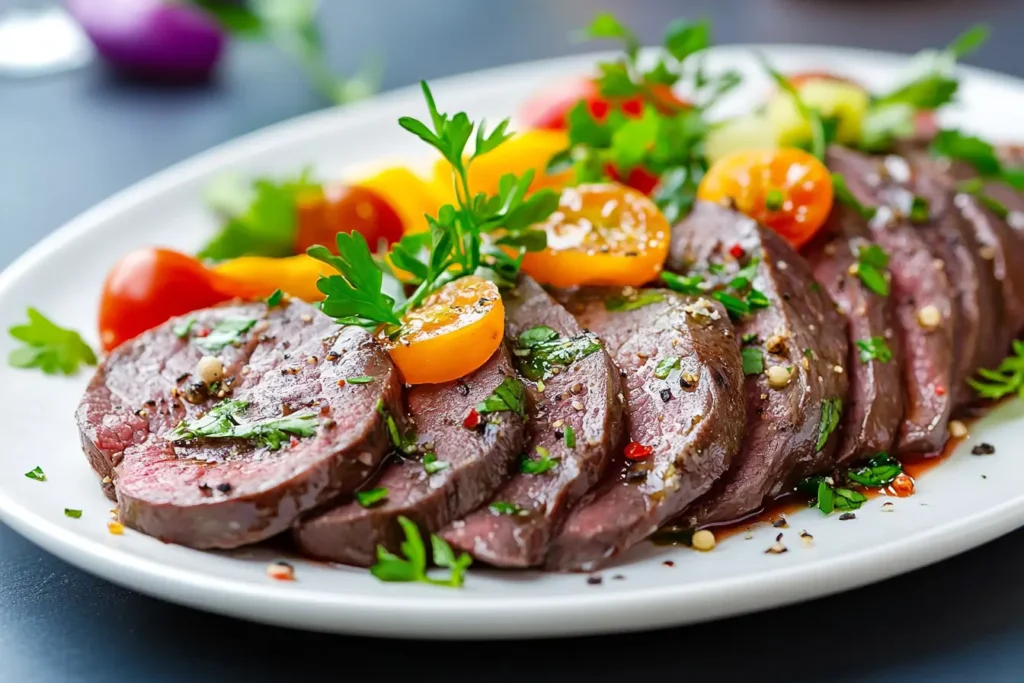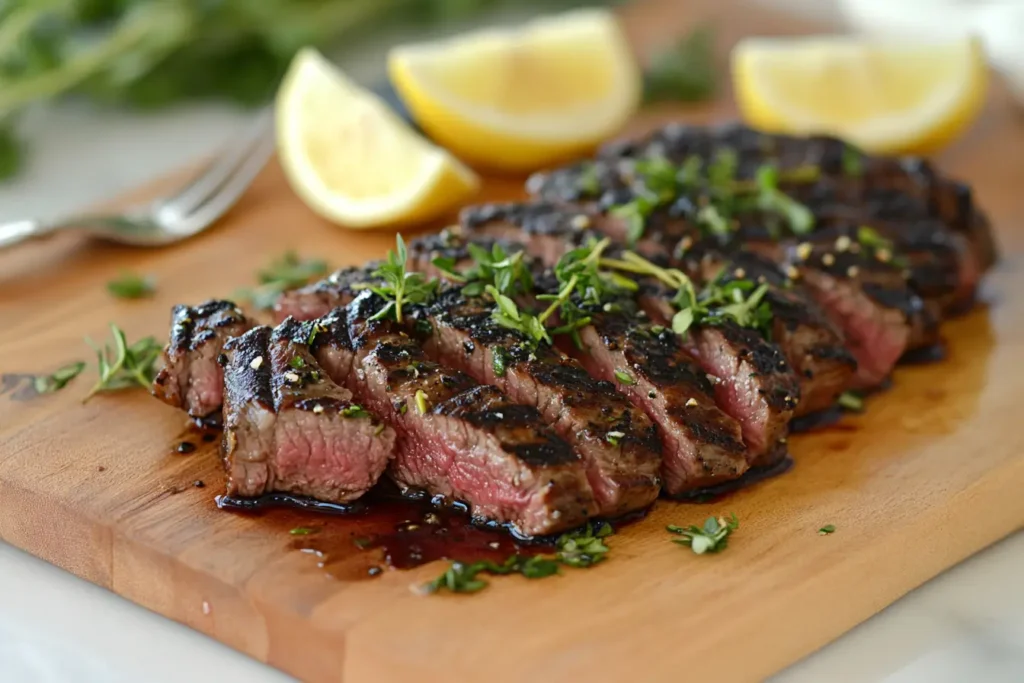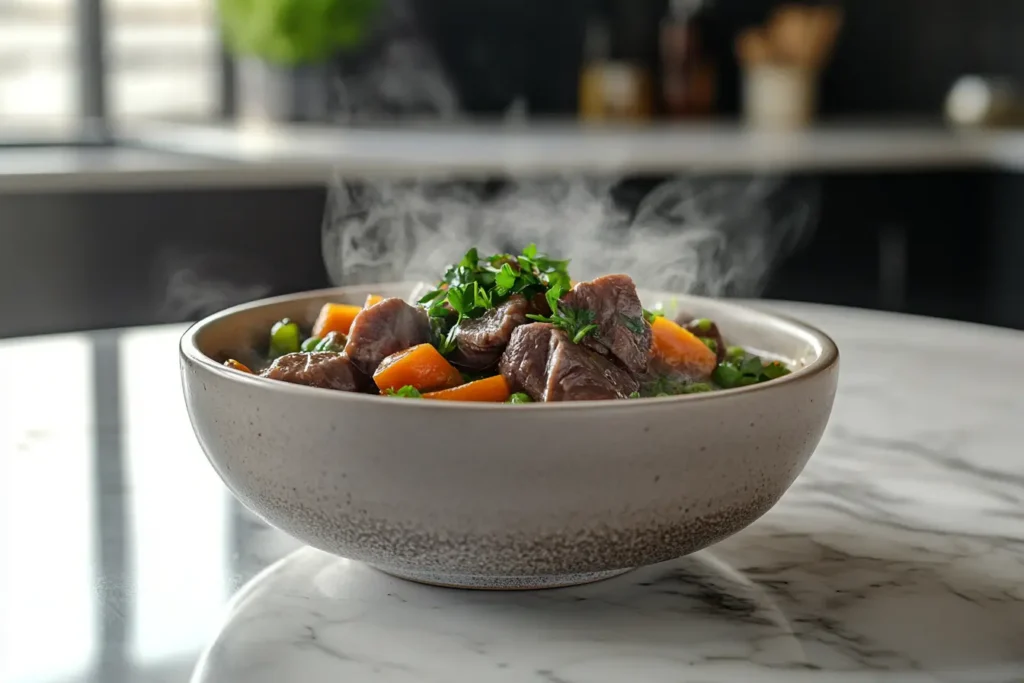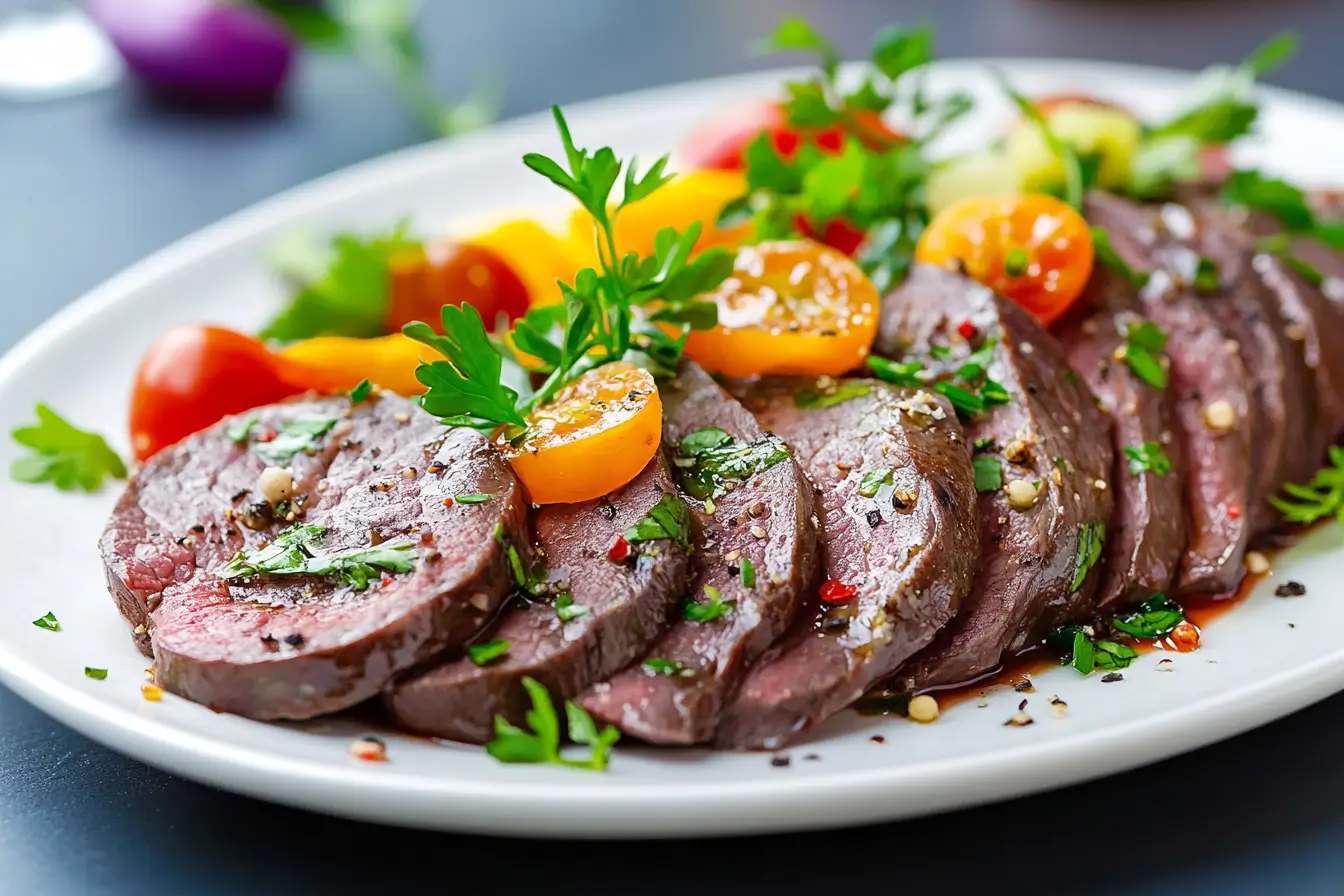
If you’re looking for a nutrient-packed food that could elevate your health and maybe even your culinary game, beef heart might be the answer. Sure, it might sound a little unconventional, but is eating beef heart healthy? Absolutely! This organ meat has been gaining attention for its impressive health benefits. Let’s dive into everything you need to know about eating beef heart—from its nutritional profile to how to prepare it like a pro.
Understanding Beef Heart as a Nutritional Powerhouse
What Is Beef Heart? An Overview of Organ Meat
So, what exactly is beef heart? Simply put, it’s the heart of a cow, a muscle like the steak you’re used to eating but with a unique nutritional twist. Organ meats, or “offal,” are less common on many plates today, but historically, they were prized for their flavor and nutrition. Is eating beef heart healthy? Absolutely! Beef heart, in particular, is a dense, flavorful cut that’s surprisingly versatile.
Think of beef heart as the hidden gem of the meat world. It’s less expensive than prime cuts, yet it delivers serious health perks. Plus, by incorporating it into your diet, you’re practicing a nose-to-tail approach to eating, which is both sustainable and respectful to the animal.
Nutritional Profile of Beef Heart: Macronutrients and Micronutrients
Beef heart isn’t just another protein source—it’s loaded with essential nutrients. Here’s what you’re getting in every bite:
- High-Quality Protein: Like other meats, beef heart is packed with protein to help repair and build muscle.
- Iron and B Vitamins: It’s a rich source of iron (great for energy levels) and B vitamins like B12, which supports brain health.
- Zinc and Selenium: These trace minerals play a role in immunity and metabolism.
Oh, and did I mention it’s low in carbs? That makes it keto-friendly, too!
Unique Nutrients Found in Beef Heart: CoQ10 and More
Now, here’s the kicker—beef heart is one of the best natural sources of Coenzyme Q10 (CoQ10). This powerful antioxidant is like the spark plug of your body, helping your cells produce energy while fighting off oxidative stress. CoQ10 is also linked to heart health, making beef heart a little ironic in the best way possible.
“The nutrients in beef heart aren’t just abundant; they’re bioavailable, meaning your body can absorb and use them efficiently.” 🌟
Health Benefits of Eating Beef Heart
Boosting Heart Health Through CoQ10
It feels poetic, doesn’t it? Eating heart to help your heart. CoQ10 plays a vital role in cardiovascular health, improving energy production and protecting your cells from damage. Studies have shown that CoQ10 may help lower blood pressure and improve overall heart function.
High-Quality Protein for Muscle Growth and Repair
If you’re hitting the gym or simply want to stay strong as you age, beef heart’s protein content has you covered. With every serving, you’re fueling your body with the building blocks it needs to repair and grow.
Supporting Energy Production with Iron and B Vitamins
Ever feel drained halfway through the day? That could be a sign you’re low on iron or B vitamins. Beef heart’s combination of heme iron (the most absorbable form) and energy-boosting B vitamins makes it a natural remedy for fatigue.
Immune System Support from Zinc and Selenium
Who doesn’t want a stronger immune system? Zinc and selenium in beef heart are like a protective shield, helping your body ward off illness while keeping inflammation in check.
Common Concerns and Risks of Eating Beef Heart
Now, before you run to the butcher shop, let’s talk about potential downsides. As with any food, moderation and sourcing matter.
Cholesterol and Saturated Fat: Should You Worry?
Beef heart does contain cholesterol and saturated fat, but here’s the deal: recent research shows dietary cholesterol doesn’t affect blood cholesterol as much as we once thought. Still, if you’re wondering, is eating beef heart healthy, the answer lies in moderation. If you’re on a heart-healthy diet, it’s smart to include beef heart as part of a balanced approach.
“Remember, it’s about balance. Incorporating beef heart into a varied diet can offer more benefits than risks.” ❤️
Overconsumption Risks: Balancing Organ Meat in Your Diet
As nutrient-dense as beef heart is, you don’t want to go overboard. Eating organ meats too frequently can lead to excessive intake of certain vitamins and minerals, like iron and vitamin A. Rotate it with other proteins for a balanced approach.
Potential Allergies and Food Intolerance Issues
Although rare, some people might be sensitive to organ meats. If you’re trying beef heart for the first time, start small and see how your body reacts.
Sourcing and Quality Concerns: Grass-Fed vs. Conventional Beef Heart
Not all beef hearts are created equal. Look for grass-fed, pasture-raised options whenever possible. These tend to have higher omega-3 levels and fewer toxins compared to conventionally raised meat.
Preparing and Cooking Beef Heart: Culinary Tips
So, you’re sold on beef heart, but how do you cook it without turning your kitchen into a science experiment? It’s easier than you think.
Selecting and Cleaning Beef Heart: A Step-by-Step Guide
Start by picking a fresh, good-quality beef heart. Clean it thoroughly by removing any connective tissue and fat. Don’t worry—it’s not as intimidating as it sounds. Think of it like prepping a steak, just with a little extra attention.
Best Cooking Methods for Retaining Nutrients

Beef heart is surprisingly versatile. You can grill it, stew it, or even slice it thin for stir-fries. If you’re curious, is eating beef heart healthy, proper cooking methods like slow cooking can help retain its nutrients while making it tender and juicy. Whatever method you choose, avoid overcooking to maximize its health benefits.
Recipe Ideas: From Grilled Steaks to Beef Heart Stews

Looking for inspiration? Here are a few ideas to get you started:
- Grilled Beef Heart Steaks: Marinate, grill, and serve like a regular steak.
- Beef Heart Stew: Slow cook with veggies for a hearty, comforting meal.
- Beef Heart Tacos: Dice it up, season well, and wrap in tortillas. 🌮
“Cooking beef heart is like unlocking a culinary adventure—once you try it, you might just get hooked.” 🍳
Preparing and Cooking Beef Heart: Culinary Tips
Getting comfortable with beef heart in your kitchen might seem daunting at first, but trust me—it’s easier (and tastier) than you think. With the right preparation and techniques, this underrated cut can become a favorite in your household.
Selecting and Cleaning Beef Heart: A Step-by-Step Guide
First things first: buying a good-quality beef heart. When shopping, look for a fresh, firm, and bright red heart. Avoid anything with an off-putting smell or discoloration. If you’re wondering, is eating beef heart healthy, choosing grass-fed beef is key—it’s not just better for your health but also for the environment.
Once you’ve got your beef heart, it’s time to clean it. Follow these steps:
- Trim the Fat and Connective Tissue: Use a sharp knife to remove any external fat, membranes, or connective tissue. This ensures a better texture and flavor.
- Slice It Open: Cut the heart open to reveal the inside chambers. Remove any blood vessels or leftover clots—this might sound gross, but it’s no worse than cleaning fish or poultry.
- Rinse Thoroughly: Wash the heart under cold running water to clean out any debris.
Now, you’ve got a clean beef heart ready for cooking. Easy, right?
Best Cooking Methods for Retaining Nutrients
Beef heart is super versatile, and the way you cook it can make or break its flavor. Here are some foolproof methods to get the best out of this cut:
- Grilling: Marinate the heart for a few hours in olive oil, garlic, and your favorite herbs, then grill it like a steak. The result? A smoky, tender dish that’s perfect for summer cookouts.
- Slow Cooking: If you prefer tender, melt-in-your-mouth meat, try slow cooking. Beef heart works beautifully in stews or soups, where it can soak up all the spices and flavors.
- Sautéing: Thinly slice the heart and stir-fry it with veggies for a quick and nutrient-packed meal. This method retains its juicy texture while adding a bit of crunch.
“Cooking beef heart is like unlocking a new level of culinary creativity—it’s versatile, forgiving, and surprisingly easy.” 🍳
Recipe Ideas: From Grilled Steaks to Beef Heart Stews
Need some inspiration? These recipes will help you turn beef heart into a meal that even skeptics will love:
- Grilled Beef Heart Steaks:
- Marinate the cleaned heart in olive oil, soy sauce, garlic, and a squeeze of lemon for 4–6 hours.
- Grill it over medium-high heat for 4–5 minutes per side until slightly charred but still juicy.
- Serve with roasted veggies or a fresh salad.
- Beef Heart Stew:
- Dice the heart into cubes and sauté it with onions and garlic.
- Add carrots, potatoes, celery, and your favorite herbs, then cover with beef broth.
- Simmer for 2–3 hours until tender. Perfect for cold, rainy days!
- Beef Heart Tacos:
- Slice the heart thinly and season it with cumin, chili powder, and paprika.
- Sear in a hot skillet, then serve in tortillas with fresh cilantro, lime juice, and avocado.
“There’s something magical about transforming an unconventional ingredient like beef heart into a dish that wows everyone at the table.” 🌮
Comparing Beef Heart to Other Organ Meats: Liver, Kidneys, and More
When it comes to organ meats, beef heart isn’t the only player in the game. Let’s see how it stacks up against other popular options like liver and kidneys.
Nutritional Differences and Similarities
Beef heart is packed with protein, iron, and CoQ10, but liver takes the crown when it comes to vitamin A. On the other hand, kidneys are rich in selenium, an antioxidant that fights oxidative stress.
Here’s the breakdown:
- Beef Heart: Excellent for CoQ10, protein, and a mild flavor.
- Liver: A powerhouse of vitamin A, great for immunity but with a stronger taste.
- Kidneys: Rich in selenium and zinc but with a distinct flavor that’s not for everyone.
Rotating these organ meats in your diet gives you a broad spectrum of nutrients.
Taste Profiles and Culinary Uses
The flavor of beef heart is often described as “beefy but mild,” making it more approachable than liver’s bold taste or kidney’s acquired flavor. It’s perfect for beginners trying organ meats for the first time.
From a culinary perspective:
- Beef Heart: Grilled, stewed, or stir-fried—it’s as versatile as your favorite steak.
- Liver: Best cooked quickly to avoid a rubbery texture. Great in pâtés or fried with onions.
- Kidneys: Traditionally slow-cooked in pies or stews to balance their strong flavor.
“Think of beef heart as the gateway organ meat—once you’ve mastered it, you’re ready to tackle the rest.” 🌟
Is Beef Heart Sustainable? Environmental and Ethical Considerations
Eating beef heart isn’t just good for you—it’s also good for the planet. Here’s why.
Reducing Food Waste Through Nose-to-Tail Eating
One of the best arguments for eating beef heart is its role in reducing food waste. In many Western diets, organ meats are often discarded, which is a shame given their nutritional value. By embracing beef heart, you’re helping make the most of every part of the animal.
Ethical Farming Practices and Their Impact on Health
Choosing grass-fed, pasture-raised beef heart not only supports ethical farming practices but also ensures higher-quality meat. Additionally, these methods prioritize animal welfare, which leads to healthier meat that is free from harmful additives. Furthermore, opting for such sources aligns with a more sustainable and responsible approach to food consumption.
“Eating beef heart isn’t just a choice for your health—it’s a step toward a more sustainable and ethical food system.” 🌍
FAQs: Frequently Asked Questions About Eating Beef Heart
Is Beef Heart Better Than Beef Muscle Meat?
While beef heart is more nutrient-dense than regular muscle meat, its flavor is milder and slightly sweeter. It’s also more affordable and sustainable. Want a detailed recipe idea? Check out this guide to beef heart recipes for inspiration.
Can You Eat Beef Heart Every Day?
Though you could technically eat beef heart daily, it’s best to consume it in moderation due to its high nutrient density. Need tips on preparing beef heart for a softer texture? Learn more about soaking beef heart before cooking.
What Are the Best Spices to Pair with Beef Heart?
Beef heart pairs beautifully with robust flavors like garlic, paprika, and cumin. If you’re wondering how to enhance its flavor, explore this article on whether beef heart tastes like regular beef.
Conclusion: Embracing Beef Heart as a Nutritious and Balanced Choice
Eating beef heart is not just a bold culinary choice; rather, it’s a step toward better nutrition, sustainability, and taste exploration. If you’ve been asking, is eating beef heart healthy, the answer lies not only in its rich nutrient profile but also in its versatility in cooking. Moreover, beef heart proves to be a hidden gem in the world of organ meats, offering both unique flavors and impressive health benefits.
For more hands-on ideas and preparation tips, dive into this comprehensive beef heart recipe guide or learn about how to make it tender and flavorful.
So why not give it a try? Whether you’re a seasoned foodie or a curious beginner, beef heart is ready to surprise and delight your taste buds. ❤️

